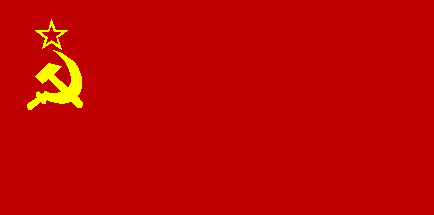





Industrial work on chemical weapons in the late 1930s was assigned to the Sixth Administration of the People's Commissariat of Heavy Industry [Narkhomtyazhprom - NKTP]. It was responsible for all work on special chemistry, including chemical weapons. The chemical industry was moved from the NKTP with the creation of the People's Commissariat of the Chemical Industry [Narkomkhimprom - NKKhP] in 1939, and the Sixth Administration was renamed the First Main Administration of the NKKhP [which was subsequently redesignated the Ministry of the Chemical Industry [MKhP]. This organizational structure continued through the war and early post-war years. It was responsible for work on developing chemical weapons in its plants, and coordinating production of chemicals and loading munitions at the plants of the Ministry of the Chemical Industry that were not directly subordinated to this main administration. The First Main Administration continued this work during the period when the Ministry was reorganized into the State Committee of the Council of Ministers of the USSR on Chemistry (GKhK), and later into the GKhK affiliated with the USSR State Planning Commission. In 1963, the Soyuzorgsintez All-Union Association was formed, which included many but not all former chemical weapons plants. This entity directed the production of chemical weapons in the Soviet Union through the late 1980s [when production largely halted], and chemical weapons development until 01 January 1993.
The Ministry of the Chemical Industry played an important role in composite material development for defense applications, because it was responsible for the other main components of advanced composites, phenolic and epoxy resins and for the chemical fibres from which carbon fibers were developed. Organisations charged with doing the initial research on carbon fibres for composites were the All-Union Scientific Research Institute of Artificial Fibres and GIPROIV a production equipment research institute for chemical fibers [which in 1976 were combined to form the All-Union Scientific Research and Design Institute of Artificial Fibers]. This was the leading enterprise of the Science Production Association NPO Khimvolokno.
By 1994 the chemical industry production had dropped by 55 percent in comparison with 1990 in Russia and Newly Independent States (NIS). This decrease was greater than in other industry sectors. In 1995, after a decade of falling output, some stabilization appeared in the Russian chemical industry. This tendency was mainly concerned with the increase of exports of chemical products. Since 1995, exports of chemical products from Russia grew significantly, and by 1997 occupied third place in the general volume of exports from Russia. The competitiveness of the Russian chemical industry is still low. Russian chemical exports are dominated by raw materials, while the exports of chemical products continue to decline. The major reason for the low competitiveness is high production costs, largely due to the use of outdated equipment and processes. More than 60 percent of Russian chemical enterprises have been operating for more than 20 years. An important step toward financing of the chemical industry was the privatization of the Russian chemical complex which began in the early 1990's. Of more than 400 of Russian chemical enterprises, more than 96 percent had been privatized by late 1997. After privatization, Russian chemical enterprises became more attractive for investors. Such companies as American AMOCO, Dupont Chemicals, Kodak, Japanese Marubeni, Mitsubishi, Kobe Steel, Holland Akzo and DSM, Korean Samsung, German BASF and Ude, as well as French and Austrian companies are investing in the Russian chemical industry. In 1996, the Russian chemical industry received about six trillion rubles of foreign investments.